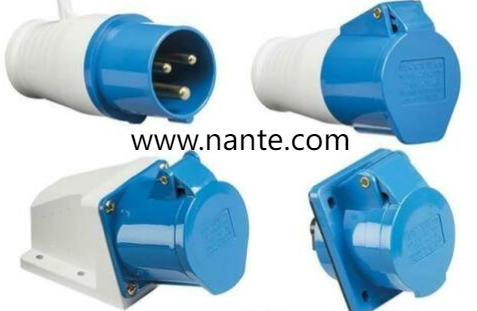What Practical Steps Extend Connector Lifespan Under Variable Climate Loads

When work moves into harsh settings where heat swings and freezing spells are possible, an Industrial Plug can make the difference between steady operation and frequent service visits. Designers craft certain connectors to tolerate temperature swings because contact integrity depends on material stability and mechanical fit. Choosing a unit rated for those conditions helps teams avoid surprise shutdowns and keeps schedules predictable.
Thermal extremes stress insulating compounds and metallic parts in distinct ways. Materials that remain pliable at low temperatures and that resist softening at high ones preserve contact pressure and prevent gaps that raise resistance. Plugs built for such ranges rely on compounds and finishes that keep shapes stable while allowing safe handling. That matters in locations where continuous operation is expected and where staff cannot stop processes for routine swap outs.
Mechanical retention also responds to thermal variation. Fastening methods that use springs or compressible elements maintain mating force even when ambient temperatures change. When a connector loosens slightly as components contract some designs compensate with internal geometry that keeps contacts aligned. This reduces the chance of intermittent connections that can be tricky to diagnose during busy shifts.
Sealing and enclosure choice play a supporting role. When devices operate near heating sources or in drafty walkways, seals must resist hardening and cracking. Gaskets that hold elasticity across a wide span prevent ingress by dust or moisture and keep corrosion at bay. That protection preserves conductive surfaces and lowers the rate of performance drift that often leads to downtime.
Material selection for conducting parts is also deliberate. Alloys that resist oxidation and coatings that guard against chemical attack help contacts remain clean under repeated thermal cycling. Surface treatments that minimize micro arcing and that smooth mating faces extend functional life and reduce the need for frequent maintenance. In environments where replacement access is limited, these features are especially valuable.
Installation practice matters when temperatures vary. Allowing modest service slack and using proper strain relief reduces stress on terminations during expansion and contraction. Mounting methods that prevent undue bending at junctions and that secure cable runs keep connections steady when ambient conditions change during a shift. Simple attention to routing can preserve alignment and reduce thermal fatigue at vulnerable points.
Maintenance routines should adapt to the setting. Inspecting seals and checking contact surfaces during scheduled rounds reveals early signs of wear. When teams replace worn collars or refresh protective coatings before obvious failure occurs, they lengthen the interval between reactive repairs. Keeping spare gaskets and common spare parts on site shortens recovery when thermal cycles accelerate wear in busy applications.
Safety design must be integral. Handles, caps and replacement accessories that remain usable when cold or hot protect technicians and reduce risky improvisation. Ergonomic details such as clear alignment marks and locking collars that operate without brittle parts ensure that routine tasks can be completed without introducing hazards during extreme conditions.
Operational planning benefits from choosing designs that match service capabilities. If a site has limited access for specialists, selecting connectors built to tolerate a wide range of temperatures reduces the pressure on logistics and scheduling. That pragmatic choice supports steadier availability and eases the burden on maintenance teams who juggle many responsibilities.
Manufacturers who support selection with clear notes on compatible cleaning agents upkeep steps and replacement parts help installers and technicians plan practical routines. When guidance aligns with site realities, equipment selection becomes part of a broader strategy for reliable operation in demanding settings rather than an isolated procurement decision.
For planners evaluating options, consider how materials mechanical features sealing and spare part availability will interact with daily tasks and exposure patterns. Choosing components that match the operating climate and the service rhythm of staff makes it easier to maintain continuous performance. To review product details application notes and maintenance support materials visit the company resource at https://www.nante.com/product/socket-plug/industrial-plug/ for specific configuration information and supplier guidance that can help match connectors to your working environment. These resources provide practical notes that support selection and upkeep planning so teams can manage operations with greater confidence.
- Art
- Causes
- Crafts
- Dance
- Drinks
- Film
- Fitness
- Food
- الألعاب
- Gardening
- Health
- الرئيسية
- Literature
- Music
- Networking
- أخرى
- Party
- Religion
- Shopping
- Sports
- Theater
- Wellness



